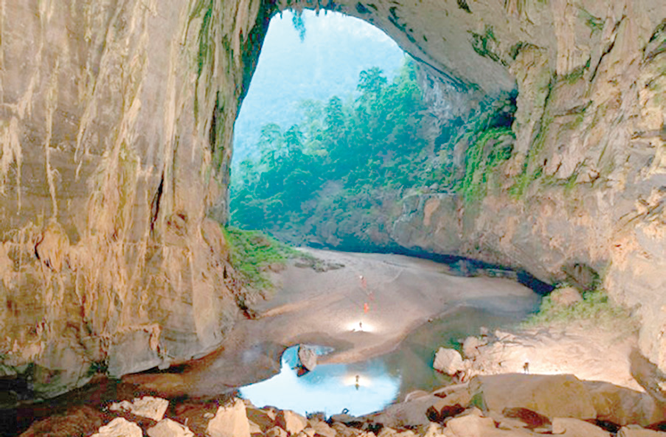
Ogbunike cave
Ogbunike cave is located behind the Ogba hills, surrounded by tropical vegetation in the neighbourhood of St. Monica College in Anambra state.
There is a long walkway with 317 steps that leads down into the valley where the caverns are situated. History has it that the Anambra State government built the walkway in the mid 1990s.
The entrance to the main cave is located in a large open chamber that is about 5 meters high, 10 meters wide, and 30 meters long. The main room has twelve tunnels that branch off in various directions, with large chambers and other tunnels of various lengths, some of which are connected.
Read Also: Àrò Mẹ́ta – The Welcome to Lagos Statue
According to oral tradition, at about six kilometers from the cave, one of the tunnels exits at the Ogbunike Town Hall, and another tunnel ends at Obosi in the Idemili North Local Government Area.
A sizable colony of bats of varying sizes inhabits the caves. Water bodies and streams can be found in many locations. One of the tunnels has a stream that empties into the swiftly moving River Nkisa. The warm water from the caves and the chilly river water may both be felt where the river and the stream converge.
A 5-by-5-square-meter tableland next to this section of the river serves as a rest area for cave visitors. The immediate area around the caverns is covered with dense tropical rainforest-style flora. Deer, antelope, grass cutters, porcupines, rabbits, alligators, snakes, frogs, and other animals are among the fauna of the area.
Ogbunike Cave has been used by the locals for many years and is connected to tradition; the location still has historical and spiritual significance. The site’s biodiversity has remained remarkably steady. The primary foliage that surround the caves are evidence of the site’s integrity.
The site is made up entirely of rolling hills and valleys that traverse over other towns and farmlands. The site has enough perimeter (20 hectares) to shield its values from the direct impacts of encroachment by people.
The hundreds of visitors the cave has welcomed throughout the decades are evident in the inscriptions, carvings, sketches, signatures, and etchings that have been made on its walls over the years.
In 2007, the National Commission for Museums and Monuments submitted Ogbunike Cave to UNESCO, under mixed category, to be considered as a World Heritage Centre. The Cave is currently on the tentative list.
Have you visited the Ogunike cave before? Share your experience with us.
